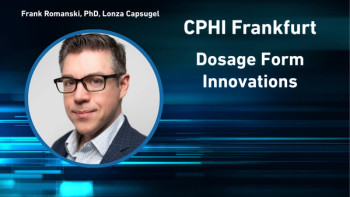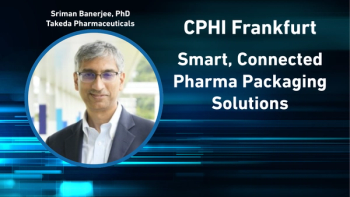
- Pharmaceutical Technology-12-02-2007
- Volume 31
- Issue 12
Generic Drugs for Everyone
To keep up with applications, FDA promotes new testing and administrative methods.
At a time when healthcare costs are escalating and millions of Americans are uninsured, generic drugs have emerged as the answer to the nation's healthcare woes. Low-cost prescription drugs can ease patient access to medicines, reduce insurance outlays, curb Medicare and Medicaid spending, and improve the overall quality of care.
Jill Wechsler
The clamor for generic drugs puts added pressure on the US Food and Drug Administration to bring new generic drugs to market as fast as they can be developed, produced, and evaluated. This task will remain a challenge as more blockbuster brand-name products lose patent protection, thus generating more applications and other documents for the agency to consider.
FDA is doing all it can to streamline its generic-drug review process. The agency's lack of resources makes the task difficult, however, as do established policies that often delay when a new generic product can come to market. The debate continues about whether generic versions of biotechnology therapies can be safe and effective and less costly than their more complex reference products.
FDA officials would like to collect user fees from generic drug makers to expand the agency's resources devoted to this area. Industry, however, wants to link fees to clear improvements in the review process and reduced barriers to market. Future legislation to facilitate approval of "biosimilars" may provide a vehicle for a generic-drug user fee program as well as other changes in current policies governing generic-drug development and approval.
Taking initiative
A main challenge for generics makers is to move applications as fast as possible through a complex review process for abbreviated new drug applications (ANDAs). FDA's Office of Generic Drugs (
Yet the steady rise in new ANDAs coming in the door makes it hard to raise FDA's productivity.
In addition to ANDAs, each newly approved generic drug generates multiple chemistry, manufacturing, and controls (CMC) supplements. CDER receives about 4000 CMC supplements each year for brand and generic drugs and biotechnology therapies. The volume has inspired an initiative to reduce the number of supplements that must be submitted in advance to the agency. FDA hopes to issue guidance in early 2008 that identifies a lengthy list of low-risk postmarketing changes that may be filed in annual reports instead of as supplements. Winkle anticipates that this initiative will reduce the supplements that FDA must review by 60%.
Plus, a growing number of citizen petitions raises both legal and scientific issues. FDA receives 20 to 25 petitions each year. Most require 8 to 10 months to review, although some take years, Winkle noted. Responding to petitions is a highly variable process that may involve CDER's Office of New Drugs, FDA lawyers, regulatory officials, and
The recently enacted FDA Amendments Act (FDAAA) includes a provision designed to prevent citizen petitions from delaying generic approvals, but it's unclear what the impact of the measure will be. The bill calls for FDA to resolve the issues raised in a citizen's petition within six months. During this process,
Buehler also pointed out that reviews take longer when ANDAs lack necessary information. Of almost 900 ANDAs filed last year, the agency rejected 96, most often because of the manufacturer's failure to provide full bioequivalence data, dissolution data, or information about inactive ingredients. Insufficient applications also frequently have omissions regarding the source of active ingredients and other suppliers and lack complete drug master file data.
Seeking solutions
In September, FDA Commissioner Andrew von Eschenbach unveiled what was billed as a new initiative to improve the ANDA review process. The Generic Initiative for Value and Efficiency (GIVE) program aims to increase
In Washington This Month
Many of the GIVE proposals already were on OGD's agenda. The office is posting individual bioequivalence recommendations on the FDA website and plans to issue a draft guidance on the issue in coming months. A database of recommended dissolution methods also has 450 entries, primarily for immediate-release products.
More ANDAs are being approved after only one review cycle, Buehler pointed out.
Asking questions
A leading
In the area of drug-product stability, for example, a QbR assessment seeks an understanding of stability design, how formulation variables affect stability, and how to assess stability in future drug batches. QbR encourages sponsors to provide tables, process-flow diagrams, and other graphics that can help
After months of fine-tuning, the QbR program appears to be gaining traction among manufacturers.
OPS is also implementing a Quality Management System for all CMC review processes, said Winkle. And the agency hopes to identify ways to streamline its Drug Master File system. An increase in electronic submissions would contribute a great deal to streamlining
A major disruption in
Seeking support
With more applications and other documents coming in the door,
Without clear performance measures and timeframes for generic drugs to actually reach the market, said Jaeger, "it's just throwing money down a hole." FDA believes that added resources will enable it to resolve issues raised in citizen petitions more quickly, but is reluctant to set specific review timeframes. The steady growth in applications and other tasks for
Approving FOBs
A generic-drug user-fee program could be established as part of legislation to authorize approval of follow-on biologics (FOBs). Generic-drug manufacturers pushed hard to include FOB provisions in FDAAA based on legislation approved in June by the Senate Health Committee, but the provisions were dropped in the end. In early September, Rep. Henry Waxman (D-CA) told a
FOB advocates concede that gaining consensus on biosimilar legislation will take time because of the considerable debate about what kind of exclusivity to grant innovator biologics. The Senate bill provides protection for 12 years, a period designed to encourage continued research and development investment by biotechnology companies. This term is less than the 14 years demanded by the Biotechnology Industry Organization, but much more than generics makers consider reasonable. Waxman told
Another contentious issue is interchangeability. Innovators maintain that "similar" does not mean "the same" and that a biosimilar should not be considered interchangeable or have the same generic name as the innovator, as is the case for conventional generic drugs.
Meanwhile, the biogenerics bandwagon is picking up steam. The European Union has approved new biosimilar versions of epoetin, and additional biosimilar applications are pending. Generics makers, as well as small biotechnology companies, maintain that analytical advances make characterization of FOBs more precise, but are willing to accept FDA case-by-case review of FOB applications. Even if biosimilars cost only 25% less than innovators, manufacturers predict significant cost savings for patients.
Promoting innovation
Officials at the US Food and Drug Administration are urging drug manufacturers to support initiatives to improve the science behind generic-drug development. Proposals are outlined in a list of "Critical Path Opportunities for Generic Drugs" issued in May 2007. Research projects that could establish new tools for assessing drug absorption and release and provide alternative methods for determining equivalence would benefit the development of generic versions of conventional drugs, as well as of nonoral dosage forms.
For locally acting drugs such as nasal sprays, inhalation drugs, topical treatments, and certain gastrointestinal drugs, FDA describes opportunities to use new imaging and pulmonary testing methods to assess bioequivalency. Better methods for characterizing complex drug substances and products may support a streamlined approach to developing generic versions of biologics.
FDA also would like generic-drug makers to become more involved in efforts to improve the science underlying quality by design (QbD) approaches for drug development and manufacturing. Janet Woodcock, FDA's deputy commissioner and chief medical officer, has been promoting QbD for innovator drugs for several years as key to modernizing regulatory oversight of drug manufacturing and testing. Now she and her colleagues want to explicitly extend this initiative to generic-drug production. Quality issues are equally important for generics, Woodcock said, noting that generics now constitute the majority of prescription-drug consumption. And, more efficient production methods are particularly important in a highly competitive industry that experiences tight profit margins, she told generics makers at a September Generic Pharmaceutical Association conference.
A QbD approach, moreover, can help ease FDA's regulatory burden and support a more efficient review system, Woodcock pointed out. The Office of Generic Drugs's question-based review system provides a framework to enable FDA to assess critical formulation and manufacturing process variables and set regulatory specifications relevant to product quality. Such information can help FDA determine the level of risk relative to product design and use and eventually enable generic-drug makers to be more flexible in making postapproval changes without having to file a supplement.
More efficient methods for ensuring drug quality also promise to maintain the safety of generic drugs, pointed out Helen Winkle, director of the Office of Pharmaceutical Science at the Center for Drug Evaluation and Research. Drug safety is a top priority for FDA, and it's "just as important for generic drugs as it is for innovators," she commented. Provisions in recently enacted FDA legislation and in the reauthorized user-fee program for prescription drugs will lead to upgrades in the agency's adverse-event reporting systems, expanded access to health-safety databases, and a new tracking system for managing postmarket drug-safety issues—all likely to increase postmarket scrutiny of prescription drugs overall.
Jill Wechsler is Pharmaceutical Technology's Washington editor, 7715 Rocton Ave., Chevy Chase, MD 20815, tel. 301.656.4634,
Articles in this issue
almost 18 years ago
Pharma Capsulesalmost 18 years ago
In the Fieldalmost 18 years ago
What's Next in: Strategy and Regulationalmost 18 years ago
What's Next In: Outsourcingalmost 18 years ago
CMOs Expand Biologics Manufacturingalmost 18 years ago
What's Next In: Information Technologyalmost 18 years ago
What's Next In: Ingredientsalmost 18 years ago
Pipeline Perilalmost 18 years ago
Pharma PredictionsNewsletter
Get the essential updates shaping the future of pharma manufacturing and compliance—subscribe today to Pharmaceutical Technology and never miss a breakthrough.




